New Book Releases / Fall 2020
If you would like to alert us to a recent or forthcoming film publication for the next round-up in winter, please contact us here. For notes on more books, see David Hudson’s monthly roundup at Criterion’s The Daily.

Allow us to open with the book publication of the State of Cinema that Olivier Assayas wrote and performed for Sabzian. On October 15, this essay has been published in French as Le temps présent du cinéma at Gallimard. The manifesto is still available to read on Sabzian (EN/NL) or watch. You can leaf through the booklet and order it for less than 4 euros on the website of publisher Gallimard.
When Assayas delivered his reflection on the contemporary state of cinephilia last June, a second and expanded edition of Girish Shambu’s The New Cinephilia was also released that same month. It includes two pieces that are not in the first edition of 2015: the manifesto ‘For a New Cinephilia,’ and ‘Time’s Up for the Male Canon,’ both written for Film Quarterly. You can order the (e-)book on the website of Canadian publishing house caboose. Moreover, after sixteen years of having the same look, Girish Shambu's blog that has been instrumental in the shaping of online cinephilia, got its first makeover.
One of Assayas’ predecessors at Cahiers du Cinéma, Claude Ollier (1922-2014), has been celebrated with a collection of his film criticism that best expresses his cinephile passion as well as the material culture of cinephilia at the time, as Belgian poet and scholar Jan Baetens writes in his appreciation of the book. In the first place a novelist, Ollier also wrote about film between between 1958-68 for Cahiers and other magazines. Ce soir à Marienbad et autres chroniques cinématographiques gathers all the pieces that had been left out of the 1979 collection of his criticism, Souvenirs Écran, which Cahiers chief Marcos Uzal, calls “one of the best film books out there”. The afterword consists of Emmanuel Burdeau's 2014 interview with Jean Narboni, who was the instigator of the first Ollier anthology and resituates Ollier's singular and highly personal criticism in its time. Published last August, you can can order the book and find an excerpt and the table of contents on the website of the Belgian publishing house Les Impressions Nouvelles. The editor, Christian Rosset, also published a book-length portrait of Ollier – Le Dissident secret – last June, available of the website of publisher Éditions Hippocampe.
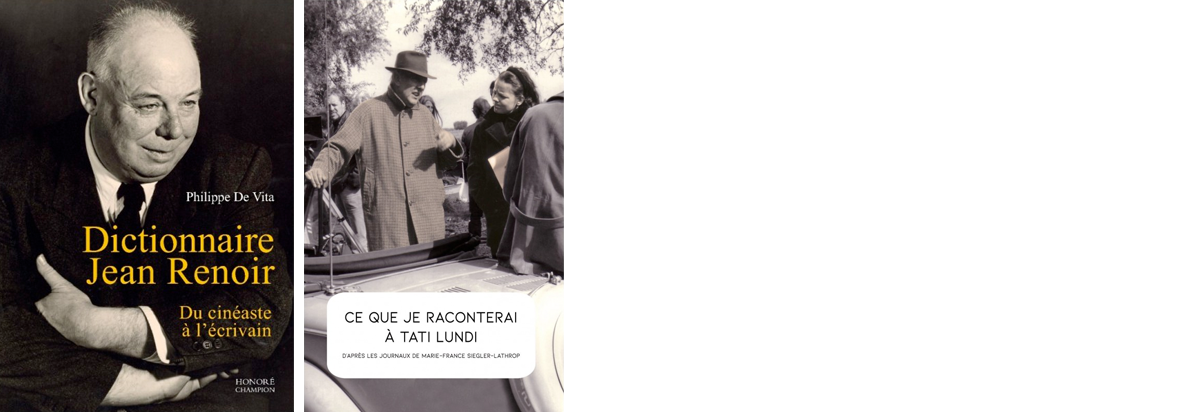
Let’s move on with a batch of five books on French filmmakers. Where the previous publication sheds light on another side of writer Claude Ollier, the next work draws the portrait of a filmmaker who moved more and more towards writing in the form of plays, a biography of his father and various novels. For Dictionnaire Jean Renoir - Du cinéaste à l’écrivain, Philippe De Vita primarely based himself on Renoir’s correspondence, which oftentimes already served as a kind of literary exercise. The dictionnary is divided in more than 120 entries, which you can find in the table of contents on the website of Éditions Honoré Champion, where the book’s also available to order since September.
In Ce que je raconterai à Tati lundi, Marie-France Siegler-Lathrop also based her account of the uniqueness of Jacques Tati on the diaries she kept during 18 years of collaboration with the French filmmaker. Responsable for the casting of Playtime (1967) at the age of 24, Siegler-Lathrop became Tati’s first assistant, while also starting to make her own films. As much her autobiography as a personal testimony of working with Tati, the book can be ordered here or by an e-mail to the author (cinesiegler@wanadoo.fr), as it’s published in a small edition.
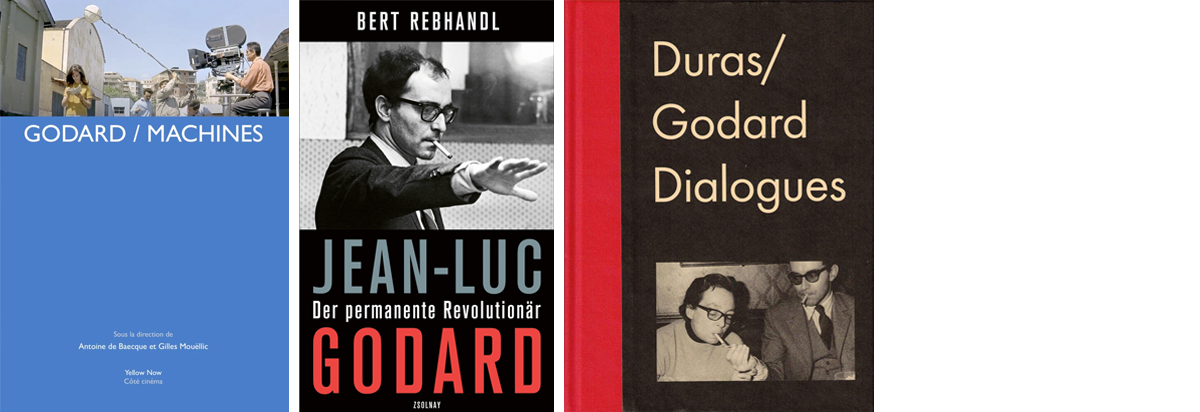
This autumn, three books about or with Jean-Luc Godard saw the light. GODARD / MACHINES is a new publication by the Belgian Editions Yellow Now, edited by Antoine de Baecque and Gilles Mouëllic. Compiling texts by, among others, Dominique Païni, Alain Bergala, Vincent Sorrel and Marcos Uzal, the book zooms in on the links between cinema and machines in the work of Godard, from the impressive Mitchell NBC camera that opens Le mépris (1963) to the video installation of Numéro deux (1975), from the ballet of cameras mounted on cranes in front of the paintings of Passion (1982) to the filmstrip images that punctuate Histoire(s) du cinéma (1988-1998). While the relationship between machines and creation is the subject of particular attention, the recurring presence of other machines in the work of Godard is also discussed. Among them, the car holds a very ambiguous place, both a symbol of modernity and the emblem of a leisure civilization whose limits Godard very quickly perceived. You can check the table of contents on the website of Editions Yellow Now.
Jean-Luc Godard: Der permanente Revolutionär is the new book by Austrian film critic Bert Rebhandl, published at Hanser Literaturverlage. The book presents itself as the first biography of Godard written in German. Starting from his entrance on the international film scene with À bout de soufflé (1960), the book aims to tell the life of one of cinema’s biggest “stars” in close relation to his work.
The New York City based publishing company The Film Desk, dedicated to publishing books on cinema, has recently published Duras / Godard Dialogues, the first English translation of three dialogues between Marguerite Duras and Jean-Luc Godard from 1979, 1980 and 1987, with the addition of an introduction, detailed footnotes and an afterword by Cyril Béghin. Last October, The Paris Review published an excerpt from the translated conversations:
GODARD
Do you believe in the Devil?
DURAS
Me? I believe in the Devil, yes. I believe in the Devil. I believe in evil. Because I believe in love, I also believe in evil.
GODARD
Yesterday you were saying that you were surprised that people don’t talk about the disinfection of politics?
DURAS
Disaffection.
GODARD
Yes …
DURAS
You changed the word on purpose. We don’t want to disinfect [politicians]. They will always proliferate. Screens are completely poisoned by this way of speaking, which represents a degraded kind of speech, a completely degraded discourse. The antithesis of true speech. A kind of speech that is antithetical to speech. All the great politicians wrote. They didn’t speak. I mean, we’re far from after-the-fact speech, from the kind of speech we started talking about earlier. One that comments. The kind I refused in Digne. Nothing is less written than the political discourse of power. By “power,” I obviously mean the institutionalized parties, whether on the left or the right. In other words, the speech of the political trade, the speech of propaganda. Of the street performer. Nothing is more opposed to true speech than that. And it must be said that often the speech of cinema, cinematic speech, follows this example. It’s a speech that sells, that sells its merchandise. Deep down, I’m very moral! [laughs.]
GODARD
If we ever go on television, we should do this interview …
DURAS
Which television? Do you really want to go on television with me? I thought you were asking me a question of principle, that kind of thing.
GODARD
Yes, that’s also true. I’d prefer to make television. But that’s more difficult.
The book can be ordered at the website of Film Desk Books, and you can read Rachel Kushner on the book at Artforum.
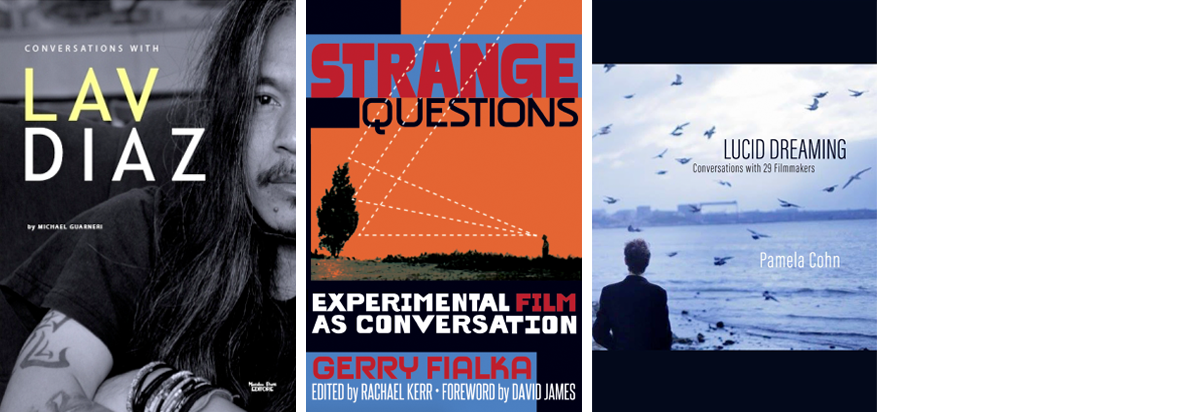
This brings us to a selection of three books of conversations with other filmmakers. Conversations with Lav Diaz brings together seven interviews conducted by the Italian critic Michael Guarneri with the Filipino filmmaker between 2010 and 2020. In these in-depth conversations, Lav Diaz discusses not only his independent filmmaking practice, but also the aesthetics and politics of his work. This English-language publication contains a foreword (‘The Monument of Black’) and an afterword (‘The Last Filipino’) by Lav Diaz himself, plus an in-depth bio-filmographic profile written by Guarneri and a black-and-white images section. The book has been published in November with Massimiliano Piretti Editore and can be ordered here.
Strange Questions: Experimental Film as Conversation gathers Gerry Fialka’s interviews with notables in avant-garde cinema that offer insights into moving image art, its creative processes and formative influences. Interviewees include Chick Strand, Lynne Sachs, Larry Gottheim, Nina Menkes, and scholars Tom Gunning and Gene Youngblood, among others. Gerry Fialka is an artist and writer who lectures on experimental film, avant-garde art, and subversive social media at NYU, UCLA, Cal Arts and MIT. The book has been self-published with Laughtears Press last October and can be ordered on its website. Fialka plans this to be the beginning of a 22-volume Strange Questions book series, which you find outlined on the latter website as well.
Lucid Dreaming: Conversations with 29 Filmmakers is a collection of long-form discussions with documentary and experimental filmmakers conducted by Pamela Cohn, an American arts journalist and festival programmer (DokuFest, True/False, IDFA) based in Berlin. Among the interviewed directors are Khalik Allah, Barbara Hammer, Sky Hopinka, Khavn, Roberto Minervini, J. P. Sniadecki, and Deborah Stratman. Out since July, the book can be ordered on the website of publisher OR Books, where you can also read an excerpt and find the full list of included filmmakers.
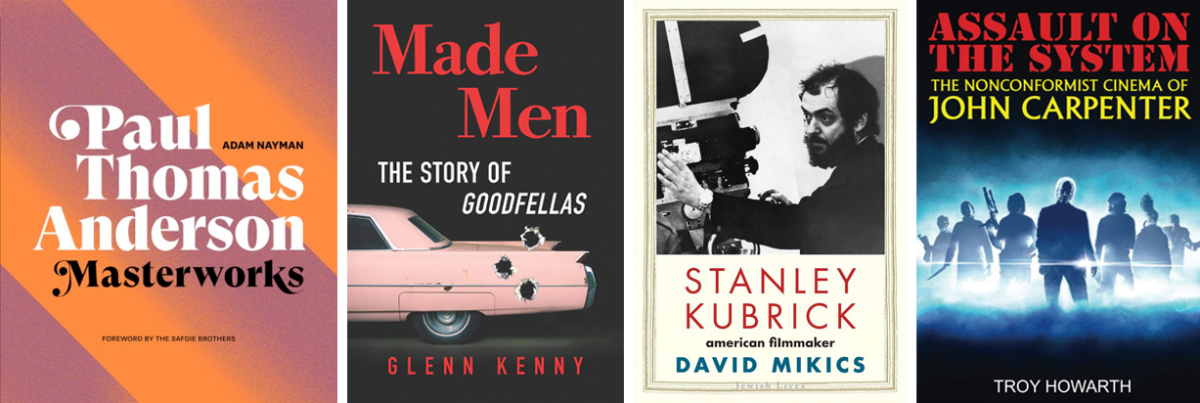
The new book by critic, lecturer and Reverse Shot staff writer Adam Nayman, Paul Thomas Anderson: Masterworks, is now available at Abrams Books. The book presents itself as a mid-career monograph exploring the 30-year creative journey of the American filmmaker and is structured chronologically according when the films are set. An excerpt of the book, a part of the chapter on the 2012 psychological drama film The Master, is available on the website of The Ringer. A conversation with Nayman by Matt Zoller Seitz on the book can be found on Rogerebert.com.
Conversely, Nayman reviewed Glenn Kenny’s new book on the making of Martin Scorsese’s Goodfellas (1990) for The Nation. Made Men. The Story of Goodfellas attempts to map out the complex scope of a film about which so much has already been written. As Nayman writes: “What keeps Made Men’s inventory of interviews, production arcana, and interpretive analysis from feeling superfluous is Kenny’s commitment to examining the myths around a movie preoccupied with mythmaking and examining the terms of its acclaim. Interviews with figures either stationed outside or retrospectively excluded from the winners’ circle cloud the celebratory atmosphere.” An excerpt of the book can be found on Rogerebert.com. Made Men. Story of Goodfellas has been published by Hanover Square Press.
The list of new publications on the work of American filmmakers goes on. On August 18, Stanley Kubrick: American Filmmaker, the new biography by David Mikics on the self-taught filmmaker, was published by Jewish Lives, a series of short biographies illuminating of Jewish figures. WK Books then again published a new book on the legendary horror filmmaker John Carpenter. Troy Howarth’s Assault on the System: The Nonconformist Cinema of John Carpenter charts the filmmaker’s trajectory from screenwriter-for-hire to director of low-budget oddities like the 1974 Dark Star to his meteoric rise and fall within the very system he came to distrust. The book is available in colour and in black-and-white edition at Amazon.
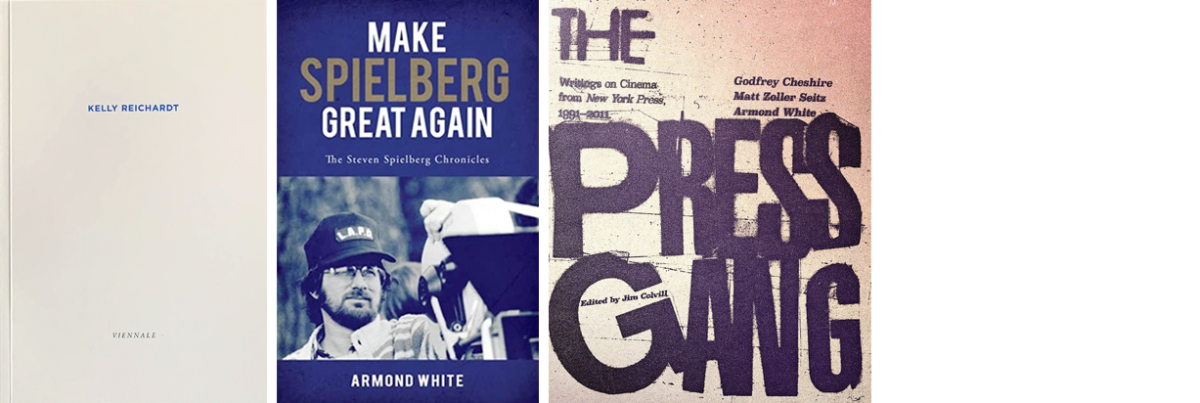
Furthermore, the Viennale has decided to dedicate the second edition of their TEXTUR publication series to Kelly Reichardt. The series that started last year with a publication on German filmmaker Angela Schanelec aims to portray the working methods of filmmakers as a diverse texture, compiling the range of influences and collaborations. The new volume on Reichardt contains an essay by the critic Jonathan Rosenbaum, an article by the filmmaker Jem Cohen about the passion that is inherent in the handiwork of this medium, two poems that were especially written for this publication by the poet Eileen Myles, a story by Maile Meloy, and numerous other written and visual contributions and interviews. You can read a chapter of the book on MUBI’s Notebook, in which the American experimental filmmaker Peggy Ahwesh reflects on Reichardt’s 2010 film, Meek’s Cutoff.
Make Spielberg Great Again: The Steven Spielberg Chronicles collects Armond White's film criticism on the most famous and popular filmmaker of the last half century. Published last October by Resistance Works WDC, the book features reviews and essays written from 1974 to the present. In most, White responds to the movies at the time of their original release (from 1974’s The Sugarland Express to 2018’s Ready Player One). However, retrospective reviews feature wisdom of hindsight (like E.T.’s 2002 re-release) and new essays provide contemporary insight.
Armond White is also featured in The Press Gang, a collection of reviews and essays by Godfrey Cheshire, Matt Zoller Seitz and White, originally written for the the weekly film columns in the NY Press, including polemics, reviews, interviews, festival reports and features. Edited by Jim Colvill, the book was published by Seven Stories Press. You can read an excerpt of the book on Rogerebert.com.
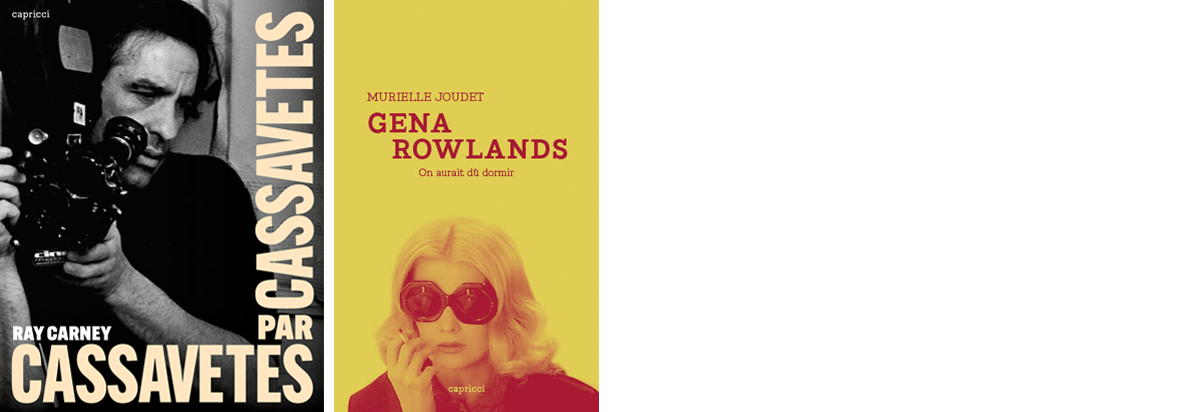
At the end of October, a French translation of Ray Carney’s 2001 book on/by John Cassavetes was published by Capricci. Following a chronological thread, John Cassavetes tells the story of his childhood and youth, his dramatic art studies, his beginnings as a broke actor in New York, his constant battles against the Hollywood studios and the automatisms of commercial cinema. He explains in detail the stages of production of each of his films, from Shadows (1959) to Love Streams (1984). Abundantly illustrated, the book alternates Cassavetes’ words with comments by his biographer Ray Carney, who comes to resituate, complete and sometimes discuss them. Hailed when it was released in the United States in 2001, Cassavetes par Cassavetes is, according to filmmaker Harmony Korine, “the best book ever written about cinema”. And there’s more Cassavetes at Capricci. Murielle Joudet’s Gena Rowlands. On aurait dû dormir tells the story of an actrice living in two worlds: the world of John Cassavetes’ films, and the lesser-known and almost antagonistic world of American television, of which she has been a familiar presence since the 1950s. This book retraces Gena Rownland’s career, explores her jagged acting and tells the story of her life as an actress in the manner of a multi-layered novel.
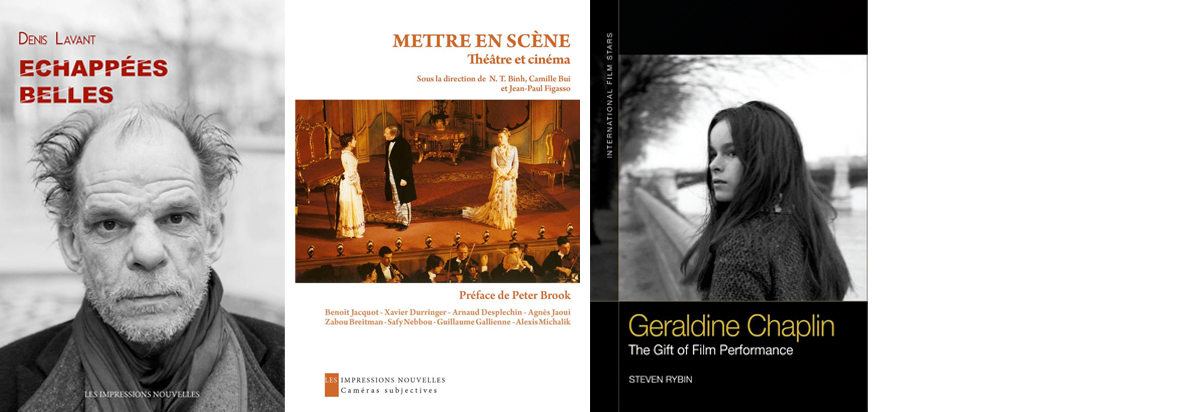
The publication about Rowlands links up with a new group of books by actors or on acting. Firstly, the French actor Denis Lavant has published the autobiographical account, Echappées Belles, last September. In this self-portrait, he evokes those who have counted the most in his career: Leos Carax, Claire Denis, but also Louis-Ferdinand Céline and Samuel Beckett. Lavant equally reflects on his experiences in French theater. In another book that was released the same month by the same publisher, Mettre en scène: Théâtre et cinéma, eight French theater- and filmmakers – Benoît Jacquot and Arnaud Desplechin, among them – talk about both fields and the art or passion they share: ‘mettre en scène’ or directing. You can find an excerpt, the table of contents and order both books on the website of Les Impressions Nouvelles.
Alongside Les enfants du paradis (Marcel Carné, 1945), the mime Marceau, Pasolini and Rimbaud, Denis Lavant pays homage in his book to Charles Chaplin. In September, Steve Rybin published his analysis of Geraldine Chaplin’s performances and their resonance with her father’s work. Rybin, who has written on the cinema of Hal Hartley, Nicholas Ray and mainly Michael Mann, shows how performative moments created by one actor can evoke the memory and performances of different historical and aesthetic contexts. Geraldine Chaplin: The Gift of Film Performance includes close readings of her performances in films such as Jacques Rivette’s Noroît (1976) or Robert Altman’s Nashville (1975), and more. You can check the table of contents and order the book on the website of Edinburgh University Press.
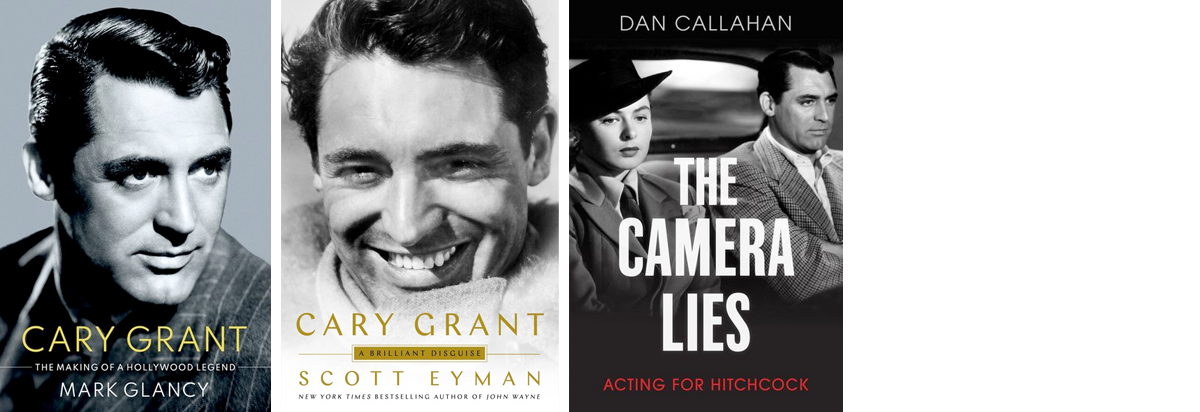
What better way to round off this section on acting than with two new books on Cary Grant and one that has the man on its cover. Cary Grant, the Making of a Hollywood Legend by film historian Mark Glancy is the first biographical, myth-busting account based on the actor’s never-before-examined personal papers. As its subtitle suggests, Scott Eyman's companion biography Cary Grant: A Brilliant Disguise, focuses on the masks Grant was wearing. Both published last October, the books are available to order on the websites of Oxford University Press and Simon & Schuster, respectively. You can read David Thomson’s elaborate, combined discussion of both books in the London Review of Books. Cary Grant collaborated on four films with Alfred Hitchcock, who once said he was the only actor he ever loved. In The Camera Lies: Acting for Hitchcock, author and film critic Dan Callahan argues that Hitchcock wanted pure ambiguity, which is what he got from Grant. The books delves into a less researched aspect of the filmmaker, i.e. his direction of actors, and unpacks Hitchcock’s legacy both as a director who continuously taught audiences to distrust appearance, and as a man with an uncanny insight into the human capacity for deceit and misinterpretation. The book’s also published by Oxford University Press and available on their website, together with a table of contents.

Another cluster of five books has to do with pornography and outré imagery. When the last big porn theater in the heart of Brussels – Cinéma ABC (Art, Beauty and Comfort) – had to close in 2013 after more than 40 years of service, part of the archives and documents that were left behind went to Nova, another Brussels’ cinema. It’s largely on these collections that graphic designer and author Jimmy Pantera based Cinéma ABC, la nécropole du porno. Testimonies by habitués and employees (strippers lived in the building) flesh out this richly illustrated history of one of the last porn theaters in the word to screen on 35mm. Published last September, you can order the book on the website of Éditions CFC, a Brussels publishing house focused on heritage.
Cinéma ABC was kept from the otherwise excellent 2009 survey, Cinémas de Bruxelles, from the same publisher. Now it has been added in the new and updated edition of this succesful classic that has appeared last October. This time, cinema historian and guide Isabel Biver collaborated with filmmaker and renowned photographer Marie-Françoise Plissart who contrasted archival images with new photos of the interiors and facades in their actual state. The book covers 111 cinemas of which only 14 are still operational today. You can watch a reportage and interview with the authors and order the book on the website of the publisher.
Many exponents of this vast network of neighborhood cinemas covered in the latter book, started to close in the 70s. It are these last heydays of 70s cinema that are celebrated in the Dutch book Alle Remmen Los! by director Jan Verheyen. The publication is a richly illustrated and subjective guide through the pulp and exploitation cinema of the time. Published on October 22, the book can be ordered on the website of publisher Houtekiet. The cinema celebrated in Verheyen’s book florished partly because the (self)censorship had eroded by the end of the 60s. Released by the same publishing house and also excluding pornography, Verboden Beelden uncovers the hidden history of film censorship in Belgium. While Belgium was said to have one of the most liberal film examination systems, in reality full scenes were left out of films until the 90s. Based on the archival piles of notebooks of the film examening commission that contain very detailed descriptions of what had to be cut, the study by Daniël Biltereyst, film professor at the University of Ghent, maps this history for the first time. The book will be available for order in December on the website of the publisher. Here, you can download the table of contents and part of the introduction.
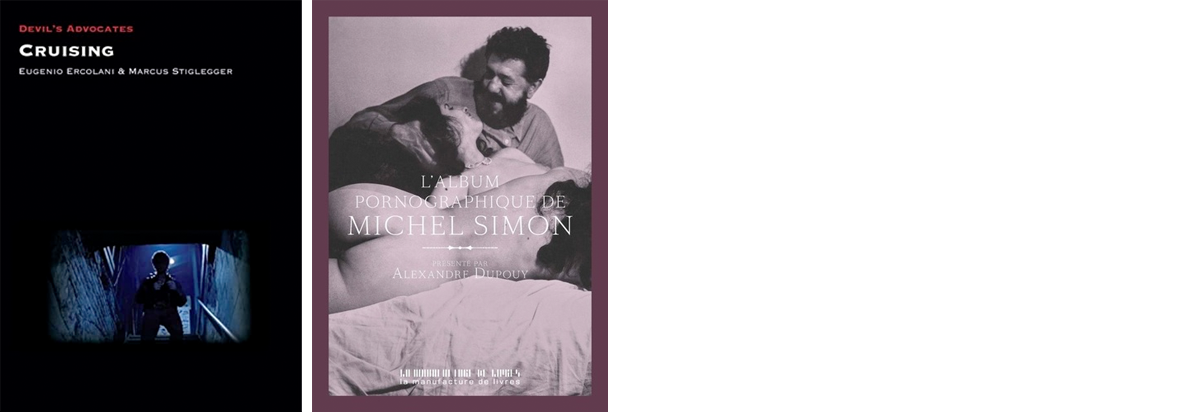
A film that’s a bitter farewell to the seventies cinema industry and took shape in the fading atmosphere of the New Hollywood era, William Friedkin’s Cruising (1980), is now celebrated with a monography. Containing subliminal porn images in the reel of the first murder scene, the film, set in the gay S&M and leather scene of the 70s, caused widespread offence among the very audience it had hoped to appeal to, via a campaign mobilised by the counter-culture press. Released in November, the book dives into the phenomenon that is Cruising, examining its creative context and its protagonists, as well as examining its ongoing popularity and fandom as it turns 40 in 2020. You can order the book on the website of publisher, Liverpool University Press, and find its table of contents, here.
While Al Pacino’s one of the most famous S&M cruisers on screen, an acting legend that in real life turned out to have contributed to the most important porn collection in the world is Michel Simon. Published in October, L’album pornographique de Michel Simon presents for the first time the 210 personal pornographic photos of the actor who made no secret of his tastes and his appetites in the matter. Simon enriched a collection that was first constituted by Pierre Louÿs and included original editions of de Sade, famous dildos and automatons among no less than thirteen thousand pieces. The photos, taken in brothels and elsewhere and often including Simon himself, are accompanied by an erotic text written by Simon about a ménage à trois between a mayor, his wife and her lover. You can order the book on the website of the publisher, La Manufacture de Livres, where you can also download an excerpt and the press reviews.

